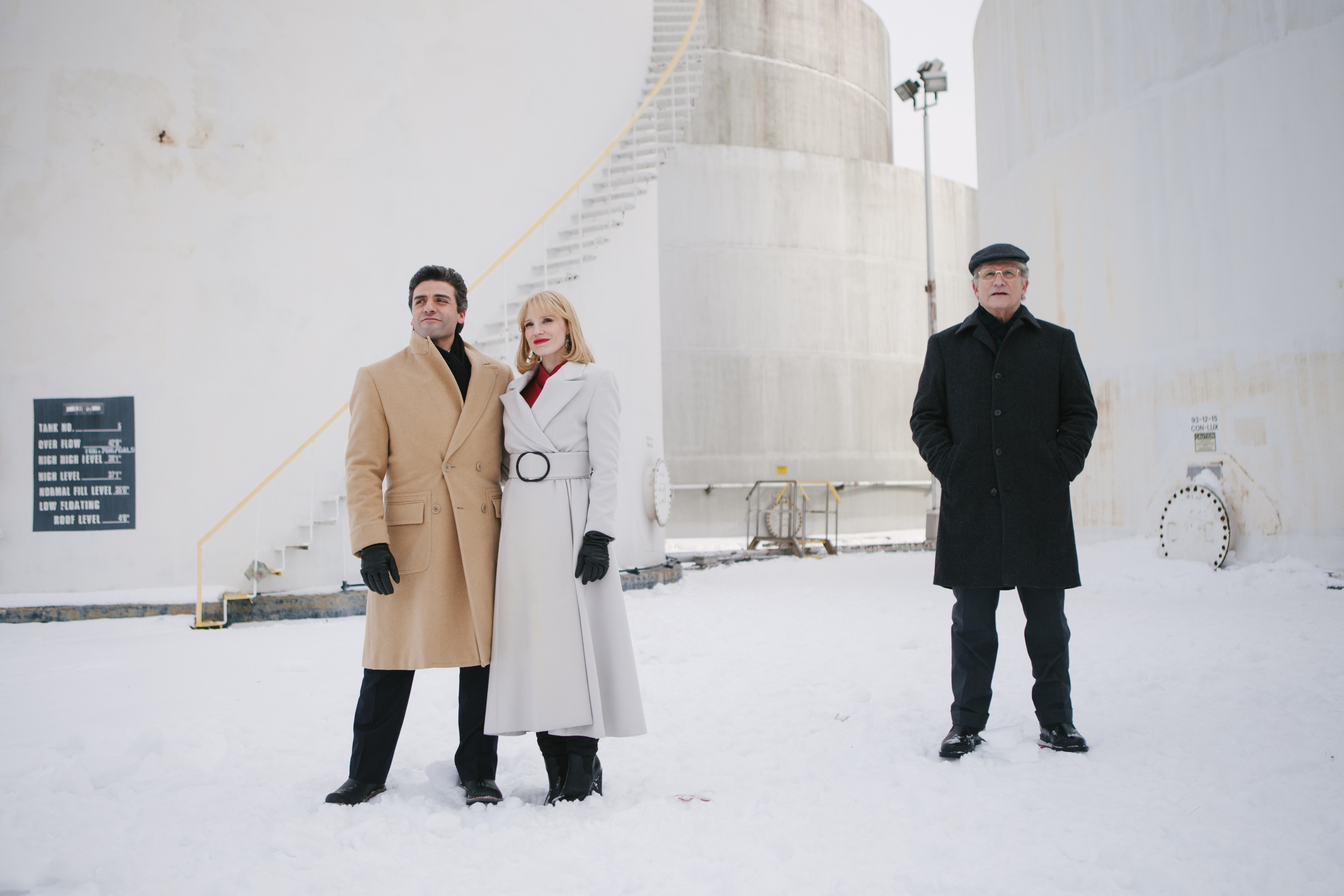A Most Violent Year is an exercise in that 1970s New Hollywood style that has become so common in recent films that it may as well now be a considered a contemporary genre of its own. Dark lighting, steady shots, gritty urban realism, a political atmosphere, and a cynical and stark worldview are all attributes of The Godfather, Taxi Driver, Dog Day Afternoon, and Serpico, amongst others, and A Most Violent Year utilizes all of them, which weighs on the film heavily.
A Most Violent Year is about the young owner of a growing oil company, Abel Morales (Oscar Isaac), whose trucks are being hijacked, men beaten, and oil stolen just as he is trying to close a deal on a riverfront property. He’s losing money; his drivers are getting nervous; he’s showing vulnerability. Adding to that, the DA’s office is bringing up charges against him for possible illegal activities. The year of the title is 1981, which was one of the most violent in New York City’s history. Throughout the film, radios in the background quietly play news stories about murders, shootings, and other commonplace violence.
The entire tradition of 1970s American cinema is a heavy weight to carry, and one cannot help while watching AMVY to recall those older films–and any film that has The Godfather and Dog Day Afternoon on its shoulders has a lot of heavy lifting to do. Interestingly enough, the film does an excellent job of establishing the story quickly and leanly; the film, however, feels insubstantial at first. Much of the dialogue is comprised of short, usually cryptic, phrases that feel like they contain truths about business and the Real-World, but the ultimate value of these phrases do not amount to the iconic power of “I’m gonna make him an offer he can’t refuse,” or “Attica!” Though the film is finely shot, and many of the compositions are outright beautiful, this cinematographic gleam results in the film feeling like an exercise in style over substance.
Thankfully, the great casts that populate the films of the 70s are reflected here with Oscar Isaac and his supporting players. Isaac, who demonstrated himself as one of this generation’s finest, most subtle actors in Inside Llewyn Davis, proves himself once more with AMVY, channeling young Al Pacino with a restraint that proves to only be a façade for a furious rage. Yet Isaac’s Abel Morales is not Pacino’s cruel, ruthless Michael Corleone. He wants to do things as right as he can, as honestly as possible. That we can recognize this in Isaac is what distinguishes his portrayal as a great performance in its own right, and not just another imitation.
As AMVY moves into its second act, it takes on a greater sense of urgency and originality. Narrative pace quickens, and by the halfway point J.C. Chandor, the ambitious director and writer of this film, begins to truly captivate with flawless sequences.
Later in the film, Abel is driving when he gets a call on his radio that one of the trucks has been hijacked. He is in the vicinity, and goes after it. The chase sequence is perhaps one of the most clichéd in all of cinema, and might be considered cheap thrills. Yet, Chandor has the audacity to put such a scene in the middle of this otherwise highbrow drama. It works. Chandor even reinvigorates this tired trope of chase scenes by having Abel follow the truck into a tunnel, where the rear lights become the only source of light in an otherwise black tunnel, and even they become muddled and distorted by sand and dust picked up by the cars. Before I mentioned that the film is beautiful and finely shot, but new, incredible images like this are what elevate the film.
Jessica Chastain as Anna Morales, Abel’s wife, also reinvents an old trope of 1970s cinema: that of the gangster’s wife. Using Diane Keaton as Kay in the Godfather films as a counterpoint, Kay rarely gets to display much agency in her position as Michael’s wife. Anna, however, does. Early in the film after a man is found on the property grounds of the Morales’s home, Anna gets a gun to protect herself and her children with, saying to her husband, “I told you. I wasn’t gonna continue to stand around and let these people come and get me and my children. Unlike you, who seems to be completely comfortable just standing around like some fucking pussy, I decided to do something about it.” Women were not granted this power forty years ago. They are rarely granted this power now. Late in the film, Anna reveals that she’s been skimming money from the company, to which Abel explosively reacts, “You stole from me.” Yet, ultimately, he takes the money. Anna wins.
A Most Violent Year moves towards its climax with a very firm awareness of things drawing to a close. But with each move towards a culmination, anxieties such as Anna’s true involvement in Abel’s affairs are dredged up. The film ends uneasily. It may not be a profound, eternal masterpiece, but it merits the title of a great movie because of the ideas it brings up, the expert level of craftsmanship at hand, and mostly the quiet changes it makes to the 1970s New Hollywood mode of filmmaking. Abel has prided himself on being honest, but as the film comes to a close, after several moral failings, the business goes on, and the images of blood and corruption stain New York City like the blackest of oil on snow.

Recent Comments